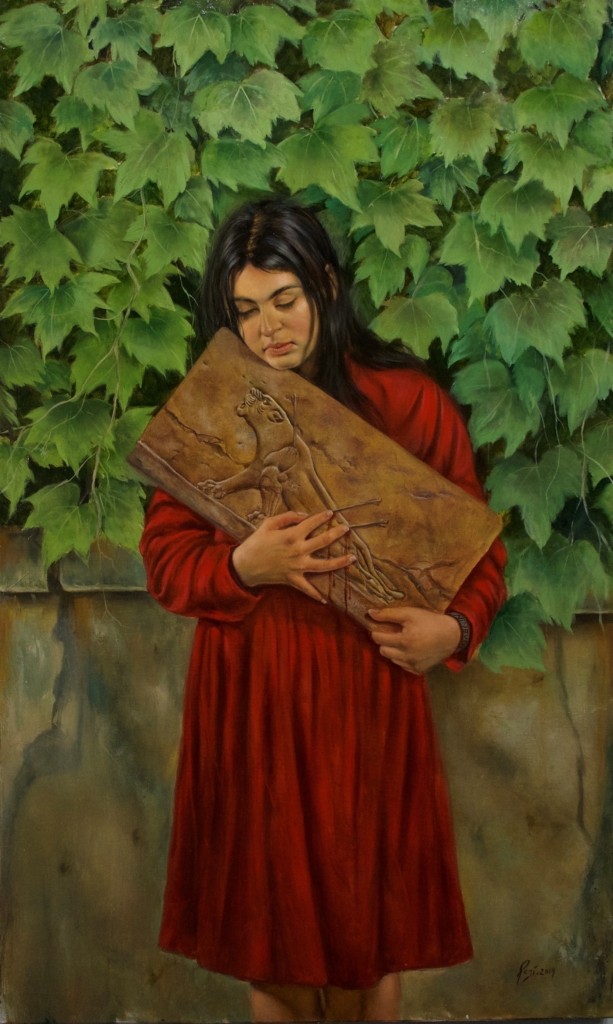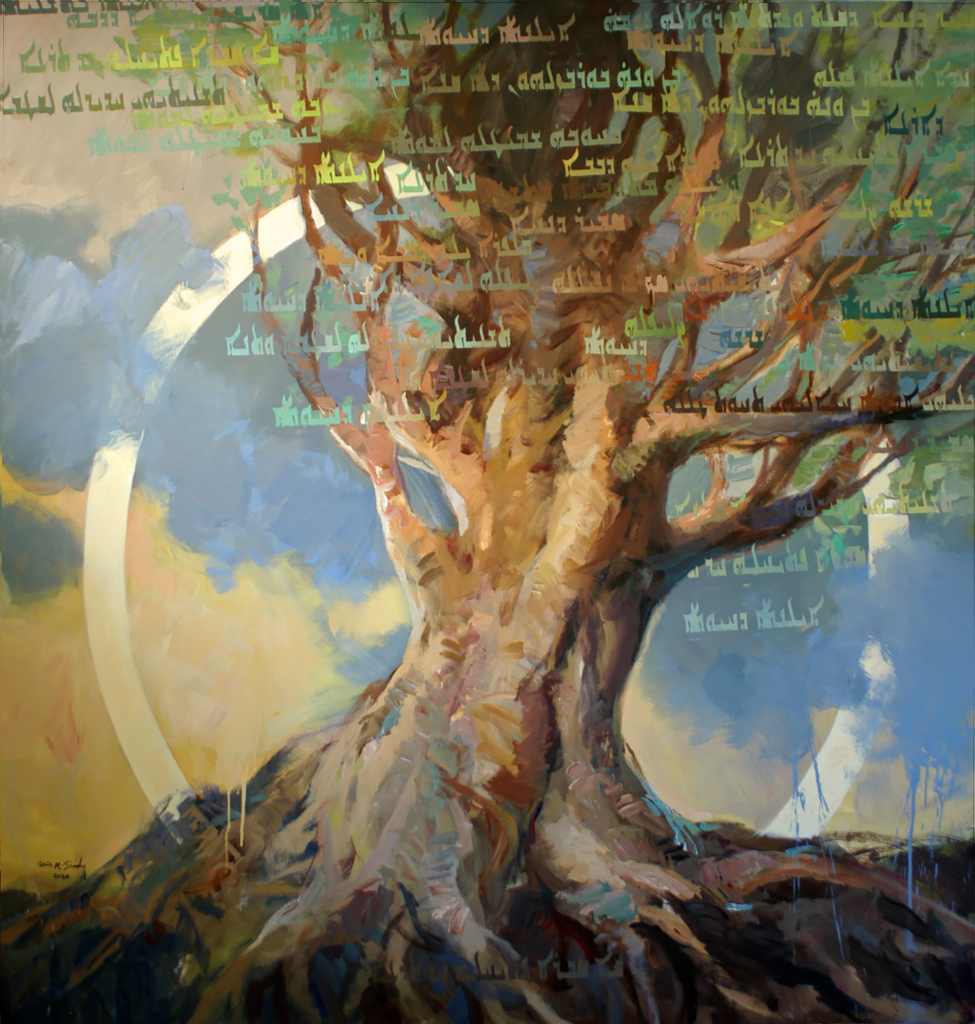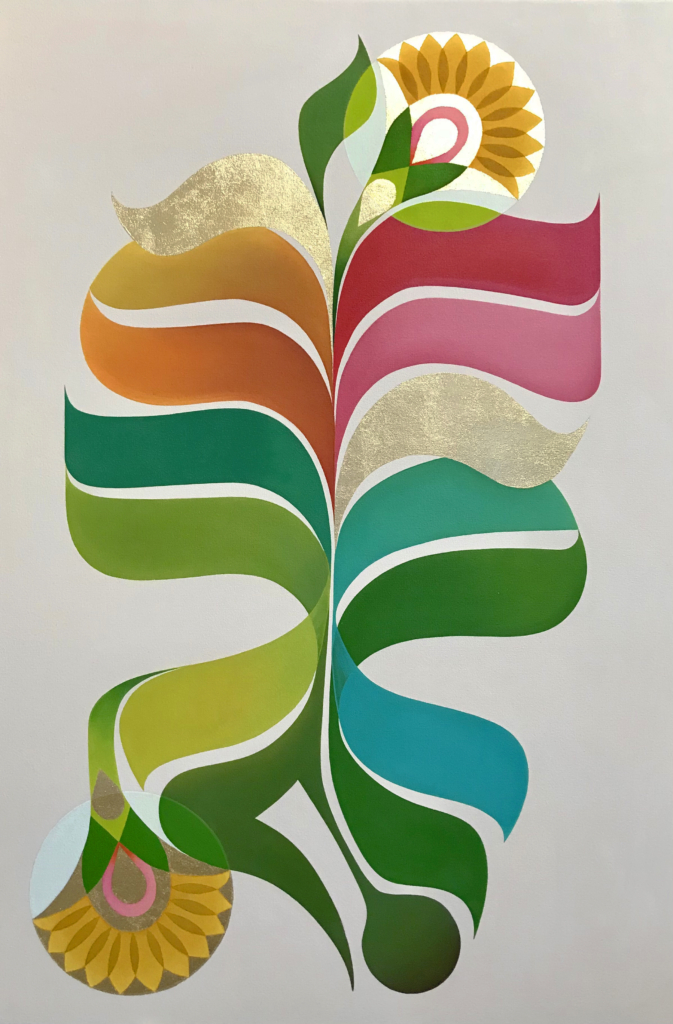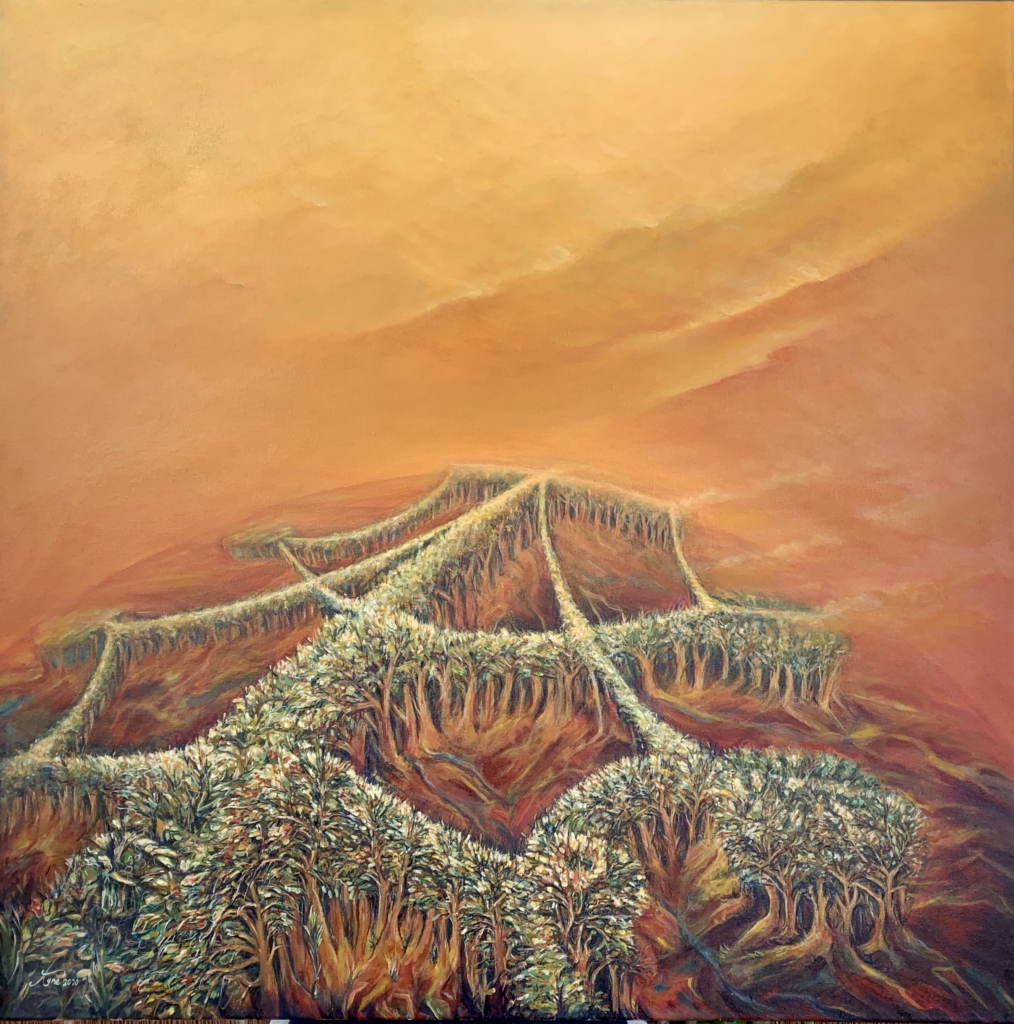Assyrian Cultural Foundation’s 2020 Art Competition: The Tree of Life
The theme of the Assyrian Cultural Foundation’s 2020 Fine Arts Competition was the “Tree of Life.” The ancient Assyrians deeply valued this theme as an important religious symbol, and represented it throughout their palaces, temples of worship, and seals.
Numerous interpretations exist as to the meaning of the Tree of Life, but it especially rose in use as the Assyrian Empire expanded its sphere of influence. The Tree primarily represented the divine world and an immortality sought by people. When represented in Assyrian art, it is often guarded by kings or angels.
One of the earliest references to the Tree of Life can be found in the Epic of Gilgamesh, which was discovered in the Ashurbanipal Library at Nineveh. In that tale, Gilgamesh engages in a search for immortality. After a long journey, he comes upon a secret plant that would grant his immortality. Instead of eating it immediately, Gilgamesh keeps the plant to share with his community, but is so tired from his journey that he falls asleep under a tree. While he does so, a serpent eats the plant he had left resting at his side, representing, perhaps, the elusiveness or impossibility of immortality.
As represented in Assyrian art, a Tree of Life is a common design in many ancient Assyrian cities. Usually, a king or deity stands on each side of it, and often, the winged-disc symbol of the god Assur sits above it. Although there are no direct textual explanations of the Tree of Life in ancient Assyrian sources, scholars speculate that the Tree represented the divine order of the world.
The most famous Tree of Life is found in the Bible. Genesis 2:9 states that when God created the world, he placed a Tree of Life and a Tree of the Knowledge of good and evil in the middle of the Garden of Eden. He then forbade the first humans, Adam and Eve, from eating from the latter tree’s fruit. However, they disobeyed, which led to the fall of humanity. Since humans experienced death thereafter, some interpret that it is because they no longer had access to the Tree of Life after their disobedience. However, in Revelation 22:2, the last chapter of the Bible, it says that there will be a Tree of Life at the end of time, which will provide healing to the nations. Thus, just as the Bible begins with a Tree of Life in the Garden of Eden, so it ends with a Tree of Life that is accessible to everyone.
Assyrian Cultural Foundation’s 2020 Art Competition Winners:
2020 First Place Winner
Reni Stephan

2020 Second Place Winner
Qais Al-Sindy

2020 Third Place Winner
Maher Minyanish

2020 Honorable Mention
Atra Givarkes

2020 Honorable Mention
Agnes Ishak

